Victorian real estate: Rental price growth by federal electorate
Rents have soared in regional Victorian seats and along the Mornington Peninsula since the last federal election as affordability proves a major issue. SEARCH YOUR SEAT.
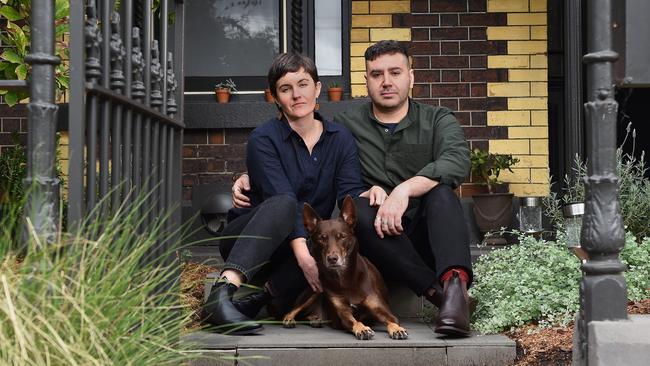
Property
Don't miss out on the headlines from Property. Followed categories will be added to My News.
Rents have soared in regional Victorian seats and along the Mornington Peninsula since the last federal election as affordability proves a major issue whether looking to buy or lease.
The Covid exodus from the city drove the median house rent up 31 per cent in Flinders and 28 per cent in Gippsland — among the steepest rises in the country in the past three years.
RELATED: How prices have changed in your seat since last election
Every Victorian suburb’s pandemic house price gains
Unit rents in the northeastern regional seat of Indi rose 29 per cent — among the nation’s biggest for units — while declining 20 per cent in Covid-hit, Greens-held Melbourne.
But rents are rapidly rising again in the Victorian capital, as borders reopen and the city shakes off the shackles of lockdown that whacked it harder than anywhere else in the country.
PropTrack data provided exclusively to News Corp shows how house and unit rents have changed in every Victorian electorate since Australia last went to the polls in 2019.
Prime Minister Scott Morrison recently declared “the best way to support people renting a house is to help them buy a house”, in relation to the government’s First Home Guarantee scheme matched by the Opposition, which will guarantee loans of as little as 5 per cent, but PropTrack economist Angus Moore said this would not help those hardest hit.
“Purchasing a home is not a viable solution for all renters, particularly for low income households,” Mr Moore said.
RELATED: International searches go nuts for rentals across inner city
Victorian rental minimum standards: Market impact one year on and what’s to come
“When we consider housing affordability, we should be considering rent assistance.”
Rent assistance is a non-taxable income supplement payable to eligible people such as pensioners who rent in the private rental market or community housing.
The payment is indexed to CPI, but Mr Moore said “for much of the past two decades rent has grown faster than CPI and rents paid by low income households have risen faster than that” — so it had not kept pace with the housing costs these households may face.
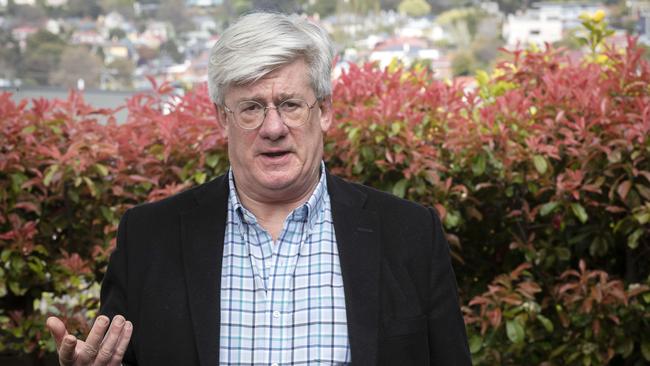
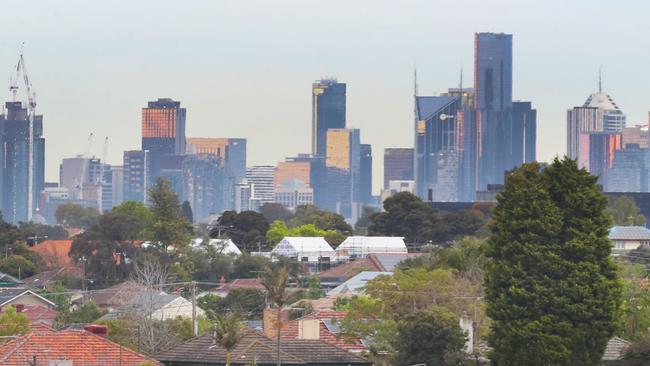
Economist Saul Eslake said the Covid-driven trend away from Melbourne that had pushed up property prices in regional areas was the same if not more stark in the rental market.
“Both house prices and rents are like almost every price, the result of the interaction between demand and supply … rents will probably remain high in regional areas because demand is outstripping supply,” Mr Eslake said.
He rejected property industry lines that “tinkering” with negative gearing, which Labor proposed to limit to new housing at the last federal election, a policy it has now abandoned, would push up rents.
“It wouldn’t send rents through the roof because every time a property investor outbids an owner occupier to buy an established property, they are creating as much demand for rental housing as they are supplying it,” Mr Eslake said.
“By definition they are outbidding a would-be homebuyer when they buy established properties — and they usually do.”
Mr Eslake noted the allowance of new negative gearing on new housing supply that Labor previously proposed “was the right approach to take”.
Tenants Victoria chief executive Jennifer Beveridge said society could not “see housing anymore through the lens of homeownership”.
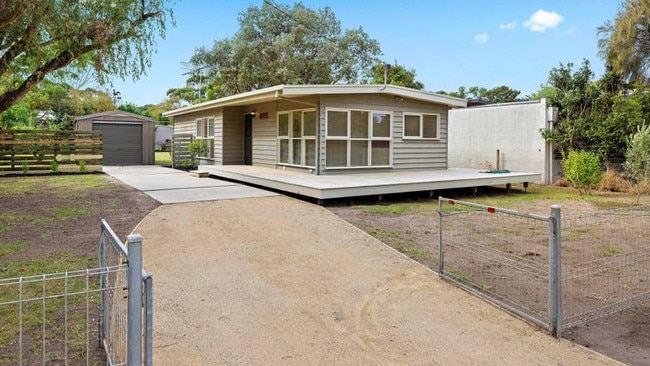

“Spiralling house prices makes it unaffordable for many of us, including increasing numbers in the younger generation. The number of long term renters is increasing, and the reality is many more people will be renting all their lives,” Ms Beveridge said.
“Affordable housing also must mean affordable rent, and for starters we need to relieve cost-of-living pressures for those with the lowest incomes by lifting up the Commonwealth Rent Assistance subsidy for people on Centrelink payments who don’t live in public housing.”
Ms Beveridge noted rents in the private market were “increasing much faster than renters’ incomes” and said the federal government had “a key role to play in building more social and affordable housing which would offer more rent stability”.
She said “too many” long-term regional renters had been displaced amid the Covid-driven exodus to the regions that had exacerbated shortages in key markets outside Melbourne.

“Unfortunately, as the result of the dire shortages we’ve seen country people resort to tents, sleeping in cars and couch surfing – this is the very definition of homelessness,” she said.
Melbourne, as a city, had the largest year-on-year increase in rental demand per listing at 59.6 per cent, according to PropTrack’s April Rental Report, with Melbourne-Inner soaring 104.8 per cent — the most of any SA4 region nationally.
PropTrack director of economic research Cameron Kusher said there was some indication rental pressures might be easing in some regional areas including Geelong.
He noted some who moved regionally may buy and others might return to major cities, however it looked “unlikely there is any significant relief on its way”.
“The volume of properties listed for rent at a national level has continued to reduce over recent months, exacerbating shortages of stock and pushing the cost of renting higher,” he said.
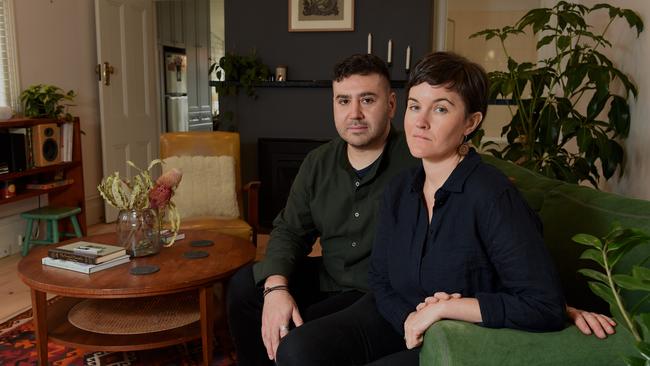
NO ROOM TO SAVE
Rez March and his partner Ailsa had to increase their weekly rental budget by $100 to secure a suitable home in the inner north.
The couple had a treacherous experience with mould at their previous place in Ascot Vale and had to move back to Tasmania to regroup amid Covid lockdowns.
Not wanting to suffer through anything similar again, Mr Marsh said they needed to up their budget from $550-$650 to $650-$750 to get a property meeting “bare minimum standards” where they wanted to live.
“If you pay more than $700 there are less problems with the actual structure, but there’s higher competition and you’re competing with people who have two salaries that earn more money,” Mr March, completing his master’s degree, said.
“Even if you can afford to pay the rent, the real estate agency usually goes with people with secure jobs earning more money.”
It took them two-and-a-half months to secure their home, a two-bedroom terrace in Fitzroy North, close to their respective university and workplace.
Buying their own place is something that will be thought of more seriously in a few years, with the majority of their income going towards rent and leaving little room for saving.
Victorian top 10 electorates with largest rent growth since last election
House
Rank, Electorate, Party, % Rent Growth
1. Flinders, Liberal/National, 31%
2. Gippsland, Liberal/National, 28%
3. Bendigo, Labor, 25%
4. Wannon, Liberal/National, 23%
5., Indi, Independent, 21%
6. Monash, Liberal/National, 21%
7. Corio, Labor, 17%
8. Mallee, Liberal/National, 16%
9. Nicholls, Liberal/National, 16%
10. Ballarat, Labor, 15%
Unit
Rank, Electorate, Party, % Rent Growth
1. Indi, Independent, 29%
2. Gippsland, Liberal/National, 24%
3. Wannon, Liberal/National, 24%
4. Flinders, Liberal/National, 21%
5. Bendigo, Labor, 20%
6. Mallee, Liberal/National, 20%
7. Monash, Liberal/National, 20%
8. Nicholls, Liberal/National, 19%
9. Corangamite, Labor, 17%
10. Corio, Labor, 16%
Overall
Rank, Electorate, Party, % Rent Growth
1. Gippsland, Liberal/National, 30%
2. Bendigo, Labor, 26%
3. Flinders, Liberal/National, 26%
4. Indi, Independent, 23%
5. Wannon, Liberal/National, 22%
6. Nicholls, Liberal/National, 21%
7. Ballarat, Labor, 19%
8. Monash, Liberal/National, 19%
9. Mallee, Liberal/National, 19%
10. Corio, Labor, 14%
Victorian electorates with smallest rent growth since last election
House
Rank, Electorate, Party, % Rent Growth
1. Lalor, Labor, -3%
2. Fraser, Labor, -2%
3. Macnamara, Labor, -1%
4. Melbourne, Greens, -1%
5. Chisholm, Liberal/National, 0%
6. Gellibrand, Labor, 0%
7. Higgins, Liberal/National, 0%
8. Hotham, Labor, 0%
9. Wills, Labor, 0%
10. Gorton, Labor, 3%
Unit
Rank, Electorate, Party, % Rent Growth
1. Melbourne, Greens, -20%
2. Macnamara, Labor, -12%
3. Kooyong, Liberal/National, -9%
4. Higgins, Liberal/National, -7%
5. Menzies, Liberal/National, -6%
6. Maribyrnong, Labor, -5%
7. Wills, Labor, -5%
8. Chisholm, Liberal/National, -4%
9. Fraser, Labor, -3%
10. Goldstein, Liberal/National, -2%
Overall
Rank, Electorate, Party, % Rent Growth
1. Melbourne, Greens, -20%
2. Macnamara, Labor, -14%
3. Higgins, Liberal/National, -10%
4. Kooyong, Liberal/National, -8%
5. Wills, Labor, -5%
6. Menzies, Liberal/National, -4%
7. Goldstein, Liberal/National, -4%
8. Cooper, Labor, -2%
9. Chisholm, Liberal/National, -2%
10. Fraser, Labor, -1%
BY PARTY, VICTORIA
Party, Property type, Current median, Median at last election, % growth
Labor, House, $420, $400, 5%
Liberal/National, House, $450, $400, 13%
Labor, Unit, $380, $390, -3%
Liberal/National, Unit, $400, $410, -2%
Source: PropTrack
Sign up to the Herald Sun Weekly Real Estate Update. Click here to get the latest Victorian property market news delivered direct to your inbox.
MORE: Danny McCubbin: How I lost money on $1.50 Italian house
Air rights for sale with apartment in Melbourne’s The Wiltshire


